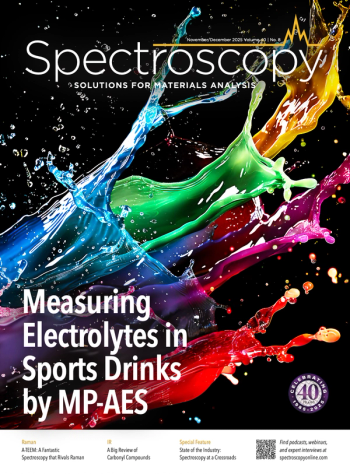
New MA-XRF Scanner Advances Cultural Heritage Analysis
A recent study introduced a new scanning X-ray fluorescence (MA-XRF) scanner that improves analysis of cultural heritage artifacts.
Cultural heritage science requires the use of spectroscopic instruments to analyze the construction and makeup of these artifacts. In particular, imaging techniques have been useful in this space to identify the elemental compositions of materials, which has allowed researchers to learn even more about these artifacts (1).
A new multimodal scanner that couples scanning X-ray fluorescence (MA-XRF), reflectance imaging spectroscopy (RIS), and luminescence imaging spectroscopy (LIS) has been introduced that can generate spatially aligned data sets, according to a study published in X-ray Spectrometry (1).
Traditionally, spectroscopic techniques, including MA-XRF, RIS, and LIS, among others, have been performed independently when conducting analysis of cultural artifacts (1). MA-XRF can identify the elemental composition of materials, which allows it to uncover hidden layers and underdrawings in paintings (1). RIS can capture information in the visible to near-infrared (NIR) range (400–2500 nm), so it is used to map pigments and provide information about the optical properties of materials (1). LIS can reveal the luminescent properties of substances, offering insights into varnishes and binding media (1). Raman spectroscopy and multivariate statistical analysis have also been used in cultural heritage studies (2).
In this latest study, by R. Moreau from the Institut de Recherche de Chimie de Paris (IRCP) and the Cyprus Institute, the authors introduced a new multimodal scanner that integrates three advanced imaging techniques (XRF, RIS, and LIS). Because these techniques have been used independently in cultural heritage applications before, the research team sought to determine whether they could combine all three into one scanner, to improve efficiency. They found that their new scanner generates spatially aligned hyperspectral data sets, offering better detail and accuracy in analyzing artworks (1).
The new multimodal scanner can cover a wider spectral range while not compromising the resolution quality. The MA-XRF covers 200–1000 nm, whereas RIS spans 400–2500 nm and LIS captures ultraviolet (UV) to NIR luminescence at 255 nm, 365 nm, and 655 nm (1). The resulting data sets are naturally aligned, ensuring consistency across different imaging modalities (1).
In addition, Moreau’s team also developed an improved processing pipeline. This pipeline allows for the coupled exploitation and interpretation of the data sets, making it easier to visualize and characterize the materials present in artworks (1). The effect is that this pipeline can handle the complex data that is generated (1).
The researchers tested their scanner on an anonymous painting that was previously analyzed with MA-XRF, RIS, and LIS individually. Their analysis focused on a restored area, revealing detailed information about the pigments, varnishes, and binders used (1). The complementary nature of MA-XRF, RIS, and LIS enabled a holistic understanding of the materials and techniques employed by the original artist and subsequent restorers (1).
The introduction of this multimodal scanner opens new avenues for the non-invasive and non-destructive study of cultural heritage objects. By delivering six distinct data sets (MA-XRF, RIS Vis-NIR, RIS SWIR, UV-LIS at 255 nm, UV-LIS at 365 nm, and NIR-LIS at 655 nm) in a single pass, the scanner offers a level of detail and accuracy previously unattainable (1).
By integrating MA-XRF, RIS, and LIS in a single instrument, researchers can speed up analysis of cultural artifacts and artwork. This breakthrough not only enhances our ability to preserve cultural heritage, but it also provides new insights into the materials and techniques used by artists throughout history (1).
References
(1) Moreau, R.; Calligaro, T.; Pichon, L.; et al. A Multimodal Scanner Coupling XRF, UV–Vis–NIR Photoluminescence and Vis–NIR–SWIR Reflectance Imaging Spectroscopy for Cultural Heritage Studies. X-Ray Spectrom. 2024, 53 (4), 271–281. DOI:
(2) Workman, Jr., J. Raman Spectroscopy Transforms Cultural Heritage and Forensic Analysis. Spectroscopy. Available at:
Newsletter
Get essential updates on the latest spectroscopy technologies, regulatory standards, and best practices—subscribe today to Spectroscopy.


